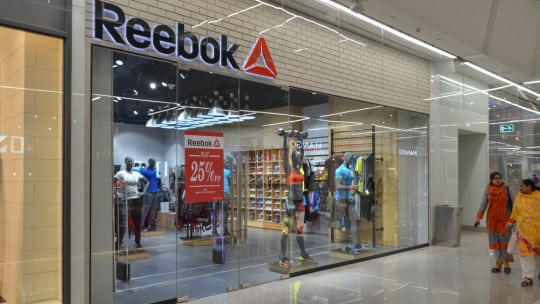
[Editor’s Note: We ask PR and marketing leaders to tell us about their influences, the best advice they’ve received and trends. This week we speak with Dan Mazei, senior director of the global newsroom at Reebok.]

The strategy of the Reebok global newsroom is to follow the consumer wherever they are and be able to use whatever tools necessary to adapt our story to that moment. The objective of the newsroom is to be a nonstop storytelling engine for the brand. It’s as simple as that.The key to running an organization like this at a strategic level is to stick to something. I get asked a lot, “What is the evolution of the newsroom strategy for the next quarter?” While you mention that you’ll be doing different things in the future, it’s also important to say you’ll be updating the strategy only if you need to. If it’s working, we’re going to roll with it. If there’s a change in the way consumers consume or in the storytelling environment, a real technological boom, these things will demand a shift in our strategy. To have the guts and fortitude to stick to a strategy is hard, but it’s also really important, because it allows you to establish a baseline for success. It’s pretty hard to prove your value as an organization if you keep pivoting your strategy every three months.
The best advice that sticks out to me is simple but powerful: If we as communicators are not thinking about what the consumer can see versus what they can’t see, then we’re failing. We at Reebok could have the best possible go-to-market plan for our next great shoe. We could have a beautiful deck to present internally and partners who are saying, “I’d love to be a part of that if it comes to life.” And we could kill the whole thing, and to the consumer we did absolutely zilch, nothing. We were in a budget meeting a week ago and we were talking through our plans for 2018. And our president, Matt O’Toole, said, “OK, when can consumers see any of this or care about any of this?” And it was silent for a moment, and he said, “OK, then can we talk about something else?” We remind ourselves of this every day, when we’re writing social copy or picking up a phone to make a pitch, but as marketers we sort of get lost in the weeds of process and KPI setting. We often forget all this work and effort is for naught unless it’s going to be visible to the consumer in some way.
Unfortunately we lost Al Golin, but he left behind a great legacy and changed the industry in a lot of ways. I didn’t get a ton of time personally with Al when I was at Golin, but he would come and tell stories about his career. It was engaging and engrossing, but more important was the accessibility to Al that was underneath it. He was all about people and humanity. He was a person who had empathy. He was an empathetic marketer; he thought about how the communications we were developing were going to make people feel. Was it going to enrich their lives? Not having sat in the office while Al was working, I believe that he would have said no to things that didn’t answer those questions. The way I saw him operate, the way he looked people in the eye when he spoke to them and remembered their names—it was invaluable for me to see that as a growing professional. That human touch and empathy are things I try to bring into my work every single day. Even though we may be in a more digital world, we can’t lose focus on the importance of human touch, because that’s what really is going to drive and inspire people.
Marketers don’t have that many opportunities to win.Most of the world is in possession of a smartphone. Yet the human attention span is shorter than it’s ever been. So we have to maximize our chances of winning. The notion that Reebok can have disparate silos of marketing that’ll all end up in the same place, which is a tile on a phone, is insane. So the premise of the newsroom is you have to take these direct-to-consumer marketing channels and put them together. We can’t be working off separate strategies and different creative concepts, because in the end the consumer is not going to spend the time to absorb all those things. So they all have to fit into one consumable message. That’s why we built the newsroom. We took the PR team, the social team and what is now the editorial content team and put them together. The idea is that the sum of those three parts, which is about 60% of our direct-to-consumer channels, is going to make that little chance that we have so much stronger. I feel strongly that we can build one idea together and have it manifested in different ways creatively.
Far too many companies are sitting on a pile of digital video that they don’t know what to do with. The trend tells us to distribute more video, so that’s exactly what we do: We push out this huge pile of video and clutter the environment. Branded newsrooms should sit at the center of video creation. Certainly there will be a place for ad creative to drive video output, but the people closest to the consumer—your PR teams and social media teams—should be sitting at the center of strategy when it comes to digital video creation and distribution. That’s an enormous opportunity.
With a brand newsroom, it’s important to establish your filter for storytelling right away.There is a human urge, and probably a leadership urge, to lean into culture whenever you can when you have a newsroom. “So you guys are seeing the trends. You’re the storytelling machine for us. You are going to be our 24/7 command center. If something’s happening, be a part of it.” That is a fine challenge for brand newsrooms to take on, but you can screw it up by getting out of your lane. Never have consumers been more sophisticated about authenticity than they are today. What consumers are absolutely saying every day, by voting with their clicks and eyeballs, is that they don’t want to see brands pretending to be everything. They want to see brands talking about the things they’re supposed to be talking about or speaking about cultural topics that relate to them or are ownable by them. We have to, as leaders of newsrooms, make it a priority to establish that criteria or filter right away, so everybody is crystal-clear about the trends we are just going to ignore and those we absolutely cannot miss.
Branded stories need to include a face. Who is the interesting personality behind the story? The answer better not be the product. There has to be someone to humanize it. There’s always some human angle behind any story you’re trying to tell. Sometimes I think we bury that lead. Another must-have element in a corporate story is what’s unique, new, different or wholly ownable. We have to be able to answer that question. None of this is new. It would have been part and parcel of our jobs when we were putting together a press release.
With an unlimited budget I think I’d open a retail shop on Mars.That would be fun. More within our orbit, I would have a 24/7 production capability in every key city in America. If something happened culturally in, say, Miami, I’d want to be able to instantly be building Reebok’s take on that story from the scene and distribute it. That would be absolutely killer.
CONTACT: [email protected]
